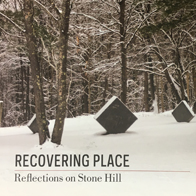
July 4–October 10, 2016
wildflowers
Stone Hill wildflowers—live plants cultivated on Stone Hill and elsewhere in Berkshire County
Photo by Henry W. Art
TRANSCRIPT:
Wildflowers are biological calendars, marking the passage of the seasons. Each community of wildflowers has its moment in the sun—starting in April when the charismatic spring forest wildflowers such as trout-lily, spring beauty, and Dutchman’s breeches bloom. This fleeting moment occurs as the woodland soil warms rapidly, but before the trees leaf-out, creating deep shade. As the forest floor becomes shady, these plants recede into dormancy and disappear below ground. In early summer, wetland soils warm, the days lengthen, and flowering commences in the swamps and marshes as Canada lily and sedges come into bloom. The asters and goldenrod of open meadows reach their peak of flowering in the late summer and early autumn, and in mid-fall there is a second, but more modest, flowering in the forests when the woodland asters and goldenrod bloom.
The landscapes of Stone Hill, like landscapes everywhere, have been changed by human activity. Stone Hill is a place where forests had dominated for thousands of years. Then, the colonial settlement of Williamstown in the mid-1700s led to the clearing of most of its woodlands by the early nineteenth century, turning Stone Hill into an agricultural landscape with islands of woodlots that provided timber and firewood. Some of the pastures and meadows of Stone Hill persist with their distinctive grassland wildflowers largely because of the grazing of livestock and mowing by farmers and institutions. If these interventions were to cease, the open spaces would rapidly revert to shrublands and woodlands, although it would take many centuries for the forests to resemble their original states.

Henry W. Art is the Robert F. Rosenburg Professor of Biology & Environmental Studies at Williams College. He has taught biology and environmental studies at Williams College since 1970 when he rejuvenated the Hopkins Memorial Forest as a field research site. His research centers on the impacts of past land uses on the successional patterns, growth rates, and ecosystem functions of a landscape typical of western New England. He also is a research collaborator at the Fire Island National Seashore. Professor Art teaches courses in plant ecology, field botany, environmental science, natural history, and sustainable agricultural ecosystems. He is a past chair of the Biology Department and former director of the Center for Environmental Studies at Williams. He also serves on the Williamstown Conservation Commission, the Williamstown COOL Committee, and the Williamstown Rural Lands Foundation, and is on the national board of Achilles International, an organization devoted to supporting adaptive runners in their athletic endeavors.
Recovering Place: Reflecting on Stone Hill
By Mark C. Taylor
An illustrated book chronicling the land art and sculptures created by Mark C. Taylor at his home in the Berkshire hills, echoing themes found in the exhibition. Supported in part by Herbert A. Allen, Jr. and the Clark Art Institute and published by Columbia University Press. Call the Museum Store at 413 458 0520 to order.

